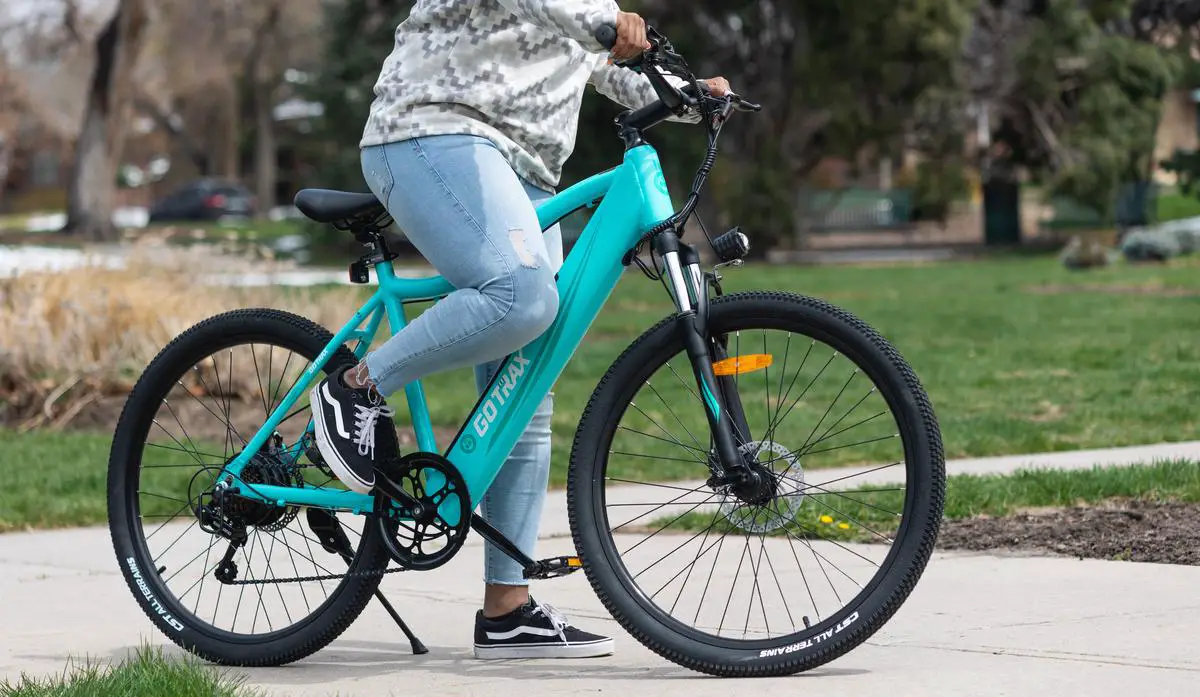As global climate change persists, people from all walks of life are seeking more sustainable ways to travel. One solution gaining traction is the eco-friendly E-bike. These technologically advanced e-bikes bridge the gap between traditional bicycles and motorbikes, offering a green alternative to conventional motorized transportation. Furthermore, they are emerging not only as a powerful tool for personal mobility but also as a catalyst for broader social, economic, and environmental transformation. Through understanding the mechanics, advancements, and impacts of E-bikes, we can fully appreciate their potential role in shaping the future of sustainable transportation.
Understanding E-Bikes and their Environmental Impact
As the world pedals its way towards more sustainable choices, the e-bike revolution marks a significant milestone in transport innovation. Roping in the advantages of traditional bicycles and combining them with the efficiency of electric vehicles, e-bikes are transforming how we explore our communities and preserve our wonderful planet!
So, what makes these nimble, eco-friendly vehicles tick? Let’s unravel the intriguing mechanism of e-bikes and delve into why they’re emerging as a poster child for green commuting!
Firstly, what is an e-bike? Simply put, it’s a bicycle equipped with an electric motor that assists the rider’s pedal-strokes. Controlled by a handlebar-mounted throttle or pedal sensor, the motor gives the necessary oomph when conquering steep hills or adding more speed to your ride. The strength of this motor, usually ranging between 250 to 750 watts, dictates the bike’s maximum speed and power.
However, the heart of the e-bike resides not in the motor, but in its battery. E-bike batteries, frequently lithium-based, provide the electricity that propels the motor. These batteries can be recharged through a standard electrical outlet, often reaching a full charge within 3 to 6 hours. The battery life depends on various factors: the terrain, the weight of the rider, the level of assistance selected, and battery capacity.
Now, let’s pivot to the exciting part: Why are e-bikes hailed as an environmentally friendly means of transport?
Emission-free: Traditional motor vehicles are notorious for spewing harmful emissions. In contrast, e-bikes generate zero tailpipe emissions, playing a vital role in improving air quality, especially in bustling urban landscapes.
Efficient energy usage: E-bikes harness electricity far more efficiently than conventional vehicles do with fossil fuels, consuming fewer resources for the same amount of work.
Lower carbon footprint: The extraction, refinement, and transportation of oil for gasoline-powered vehicles dramatically contribute to greenhouse gas emissions. As e-bikes run on electricity, they escape this resource-intensive process, considerably shrinking their overall carbon footprint.
Promotion of renewable energy: When charged through an electricity grid powered by renewable sources, e-bikes push the envelope even further in reducing environmental harm.
Less roadway wear and tear: Weighing significantly less than cars or buses, e-bikes cause less damage to roads, causing lesser demands for road repairs. This leads to fewer construction emissions and further conservation of materials.
Surely, e-bikes aren’t a perfect solution and carry their environmental baggage, such as battery disposal. Nonetheless, they’re a novelty step in the right direction, offering both a versatile and cleaner approach to commuting. Truly, the fusion of form, functionality, and eco-friendliness in these two-wheeled contraptions is nothing short of phenomenal.
As hobbyists, enthusiasts, and sustainably-minded consumers, relishing a ride on an e-bike means embracing an exhilarating and eco-aware future. So, let’s charge up, saddle up, and ride that green tide!

Industry Growth and Technological Advances in E-Bikes
The Remarkable Growth of the E-Bike Industry and the Cutting-edge Technologies Propelling it Forward
The e-bike industry is in the midst of an electrifying transformation, driven by a potent mix of innovation, evolving consumer behavior, and an increased push towards sustainability. From a nascent field, the e-bike industry has grown exponentially, reaching an estimated market size of USD 23.89 billion in 2020, with forecasts indicating a steady 7.0% compound annual growth rate until 2025. This expansion is not accidental, but rather the result of groundbreaking technological advancements and forward-thinking strategies that have captivated bikers globally.
The evolution of the e-bike industry has been catalyzed by technology. The introduction of lighter, more powerful batteries was a game-changer. Lithium-ion batteries, the current gold standard, have managed to replace their bulky predecessors, offering a smaller size, longer lifespan, and higher energy efficiency. This breakthrough considerably increased the range of e-bikes, addressing one of the significant pain-points for potential e-bike owners.
However, battery technology is continuously improving. The latest development, solid-state batteries, are projected to be the future of e-bike power storage. They are lighter, longer-lasting, and can charge significantly faster than their lithium-ion counterparts. While still in the early stages of commercial introduction, they hold immense promise, and their deployment might profoundly influence the e-bike industry.
Another exciting advancement in the e-bike industry lies with the sensors and integrated systems. These “smart” features, such as ride optimizing software, location trackers, or theft protection systems, are revolutionizing the rider’s experience. In addition to enhancing safety and convenience, they offer a personalized ride, adapting the bike’s performance to the individual’s riding style and preference.
Further pushing the boundaries are cutting-edge materials and designs that have reinvented the e-bike aesthetic, one frame at a time. Lightweight carbon fiber frames and aerodynamic design elements not only decrease bike weight but also improve speed and maneuverability. Some manufacturers are even exploring the use of 3D printing technology, ushering the dawn of customizable e-bikes.
In the run for improving efficiency, regenerative braking systems have also made a bold entry into the e-bike world. This technology converts typically wasted energy during braking into electricity that recharges the battery. It’s a brilliant example of how technology is being leveraged to enhance the eco-efficiency of e-bikes, even as they whir along paths and over hills.
The emerging wireless charging solutions, though still in initial stages, are another fascinating leap forward. Freely parking and charging your e-bike, without the hassle of cords or plugs, is a fascinating future reality. Moreover, such a “charge-and-go” infrastructure could significantly encourage e-bike adoption.
All things considered, the relentless pace of advancements in technology, coupled with a global push for greener modes of transport, signals exciting times ahead for the e-bike industry. One can only wait, wide-eyed and enthusiastic, to watch where this electrifying trail of innovation leads.

The Influence of E-Bikes on Urban Planning and Transportation
Making great strides in the world of sustainability and transportation, e-bikes are actively challenging our traditional views of urban planning and infrastructure. The growth of the e-bike industry shows us that this is not just a passing trend, but a veritable revolution in how we tackle commuting and personal transportation.
The stride of progress impossible to ignore, technology has been a significant driving force in molding the e-bike industry. Innovations in material science, mechanical engineering, and electronics have converged to foster e-bike evolution from a novel concept to a practical, everyday reality.
A particularly fascinating breakthrough is experienced in the realm of battery technology. Modern batteries are not only lighter and more compact than their predecessors, but the energy they pack allows for longer rides and swifter climbs. Lithium-ion batteries, currently the most common type, are frequently being improved for greater energy density and longevity.
However, it’s the advent of solid-state batteries that truly spark excitement and promise drastic improvements. These batteries offer a higher specific energy (more energy storage for the same weight) and are less prone to overheating, meeting the demands of efficiency and safety that consumers covet in electric transport systems.
Not to be outdone, sensor technology and incorporated systems are boosting e-bike performance, too. Advanced e-bikes today are equipped with intelligent drive systems that adjust in real-time, boosting your pedaling power precisely when you need it. This sophisticated interaction elevates the riding experience to a level traditional bikes can hardly match.
Arguably, one of the most significant advancements in e-bike technology lies in the materials and design. Stronger, lightweight composites and aerodynamic configurations have made e-bikes nimbler and more durable, ensuring they are no longer the clunky contraptions of the past. Even the weight distribution has been modernized, balancing between the wheels to ensure optimal handling.
Another innovation turning heads is regenerative braking systems, which generate power when you brake or coast downhill. These systems capture and convert this kinetic energy back into electrical energy, storing it in your battery for later use. It’s an elegant solution that improves efficiency and lengthens the e-bike’s range.
Lastly, the possibilities of wireless charging solutions also contribute to e-bike’s future prospects. Imagine stopping for a coffee and charging up your e-bike, just by parking it over a designated spot. That’s the promise of magnetic induction charging, bringing convenience to the fore as we look to the potential of e-bikes.
In summary, e-bikes didn’t get here by chance – this has been a meticulously planned evolution, backed by forward-thinking technologies and innovations. As the world shifts its focus to sustainable transportation, e-bikes are at the forefront, helping to shape a future where our movement is less about emissions and more about efficiency and convenience. The e-bike’s journey is far from over; it’s just beginning to gather momentum. Hold tight, the road ahead is electrifying!

E-Bike Lifestyle Adaptation and Benefits
Embarking on the e-bike lifestyle brings not only environmental advantages, but also a myriad of personal benefits that are worth exploring.
The most notable aspect is the diverse health benefits, which merge the pleasure of cycling with a helping hand when needed, making e-bike riding a perfect blend of exercise and convenience.
E-bikes can provide a higher level of physical activity than traditional biking, depending on the level of pedal-assist used. By using lesser assistance, riders can get a great cardiovascular workout, strengthening their heart, blood vessels, and lungs.
Regular use of an e-bike can also boost muscle strength across various body parts, including legs, back, and the cardio-respiratory system.
Additionally, e-biking is a low-impact exercise, reducing the risks of injuries often associated with high-impact sports, and is beneficial for those recovering from injuries or living with physical disabilities.
Transitioning to an e-bike lifestyle also promotes overall mental wellbeing. Engaging in outdoor physical activity boosts the production of endorphins, which are the body’s natural mood lifters.
Thus, e-biking can help in reducing stress, anxiety, and even symptoms of depression.
Furthermore, building up endurance through gradual increase in e-bike use results in an invaluable sense of accomplishment that positively fuels one’s self-esteem and offers an exhilarating sensation of freedom.
In addition to health benefits, e-bikes also foster a sense of community. Many cities have e-bike groups where enthusiasts can join group rides, workshops, and other social events.
This interaction provides an excellent opportunity to meet like-minded individuals, share experiences, or learn from others, strengthening the bonds of the e-biking community.
Now, to smooth one’s transition towards the e-bike lifestyle, it’s essential to understand that riding an e-bike is not much different from regular biking – except for the added boost.
Start with short trips, maybe for errands or short commutes, and gradually increase the distance as confidence grows.
It’s also crucial to know how to care for the e-bike battery properly to maximize its lifespan and maintain peak performance.
When it comes to choosing an e-bike, it’s essential to evaluate based on riding style, preferred terrain, and personal needs.
Today’s market caters to a variety of preferences with models ranging from commuter e-bikes, off-road e-bikes, cargo e-bikes, and even folding e-bikes for easy transport and storage.
Finally, remember to respect traffic laws, wear a helmet, and adhere to safe riding practices.
Joining the e-bike lifestyle not only offers an environmentally friendly transport solution but also brings significant gains in health, happiness, and community bonding.
As technology continues to evolve, e-bikes’ future shines bright, promising a seamless merge of sustainability, efficiency, and personal well-being.
Indeed, adopting an e-bike lifestyle is an adventure brimming with endless delights!

Future Predictions for E-Bikes and Sustainable Transportation
Propelled by the gravitating trend in sustainable living, e-bikes are riding the wave into an intriguingly promising future. Coupled with the incredible advances in technology, e-biking is quickly establishing itself as a lifestyle rather than just a pastime or a means to commute.
The performance-enhancing benefits of using e-bikes are one of the significant aspects that may drive the future growth of the e-bike industry. Regular e-biking simultaneously offers aerobic and muscle-building benefits, due to the pedaling action involved. As e-bike users can adjust the level of assistant provided by the electric motor, the potential for customized workouts and a balanced approach to fitness are unparalleled.
The role of e-bikes cannot be underestimated when considering its influence on mental well-being. The exhilarating sense of freedom, the joy of movement, and the appreciation of one’s surroundings while on an e-bike ride release natural endorphins, leading to reduced stress and a happier, healthier mental state—a key dimension in overall wellness.
E-biking is a hobby that fosters a profound sense of community among its enthusiasts. The ability to be part of group rides, regardless of fitness level, age, or physical ability, underscores the inclusivity of this hobby. And as many cities are gradually expanding their cycling infrastructure, the appeal of e-bikes within communities only continues to grow.
Building an e-bike lifestyle is a journey, and for those considering taking the leap, here are some tips. Scrutinize the range, power, and type of the e-bike to suit individual needs. Look out for robust warranties and reputable manufacturers to ensure top-notch aftercare. For e-bike batteries, the impressive strides in battery management systems (BMS) are offering longer operating lifetimes, intelligent balancing and enhanced system safety.
Lastly
, though e-bikes sport built-in safety features and design aspects, it is vital to abide by traffic laws and safe riding practices. These include wearing helmets, using signal lights, maintaining a safe distance in traffic, not using mobile phones while riding, among others.
The adhesion to an e-bike lifestyle is an intrinsic kickoff, not just to a healthier, more fit version of oneself, but also to the vision of a sustainable future. Now, more than ever, the time for e-bikes is nigh!

As we navigate towards a sustainable future, E-bikes are predicted to play a key part in the evolution of urban transportation. In light of their remarkable growth, new technological advancements, urban planning implications, and lifestyle benefits, E-bikes hold promise for a more sustainable and efficient transportation ecosystem. Their potential to curb carbon emissions, alleviate traffic congestion and improve individual health, aligns with global efforts to combat climate change and promote quality of life. The journey to making E-bikes the transportation mode of choice might be long and fraught with challenges, but the opportunities and benefits it offers perhaps offer a glimpse into a greener, healthier future.

